5 min read
Share this post

I’ve recently released a set of 28 Lesson Plans designed to teach ESL reading online. You can find them here. The lesson plans each start with warm-up activities that prepare the student for the theme and vocabulary covered in the lesson and then progress to a 300-400 word reading text. The lessons finish with comprehension questions based on the text:
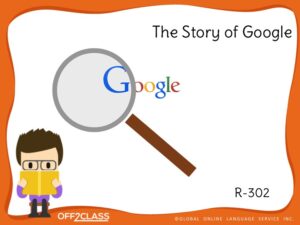
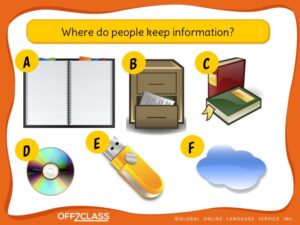
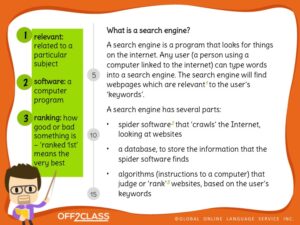

At the end of the lesson, you can assign a set of self-study exercises to your student. The self-study exercises provide further comprehension questions based on the same text covered in the lesson:
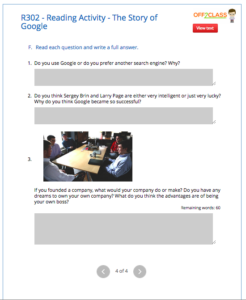
Why I chose this approach to teach ESL reading online…
To teach ESL reading online, you need to remember that the online classroom presents some unique differences to an in-person environment.
Firstly, your student will be focusing on a screen and you need to fill it with stimulating pictures and text. But how does this lend itself to reading? Won’t the screen just be filled up with the reading text you are reviewing with your student? We start our reading lessons with a series of image rich slides that are designed to warm your students up for the theme and vocabulary being tackled in the reading text. I’ve found this approach is much more stimulating for my students, rather than opening up with a screen full of text.
Secondly, remember that in the online classroom it’s not always easy to switch pages. This is especially important if you want to tackle comprehension questions with your students after covering a reading text. In our lessons, we split the reading text into 3-5 slides to make the text less overwhelming to the student. For our comprehension questions, we provide you with the slide and line number of where you can find the answers, so you can guide your student on where to find the answers they are looking for in the text.


Finally, remember that the online classroom requires adaptive teaching. If your student is reacting well to the theme of the reading text that you’ve selected, feel free to bring in other content such as YouTube videos or images to stimulate conversation.
Share this post


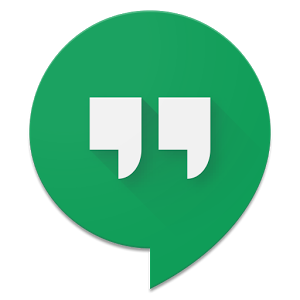
12 Comments
Hi,
Do you ask students to read the text aloud in class? Do you think that reading aloud for pronunciation in class can be useful?
Thank you.
Hi John thanks for stopping by. Actually, this article is written from the perspective of an online, one-on-one tutorial. So yes, I do have the student read out loud and it’s very useful both for comprehension and pronunciation (most of my students don’t read enough!). That being said, for a classroom setting I’m not sure I would conduct out-loud reading, unless it was a very small class.
Hi.
Where do you get text for your reading lesons ?
Do you use adopted books or write texts yourself ?
Hi Poul, we write them ourselves. Where do you like to find texts for your reading lessons?
Hi Kris.
I don’t know. May be I’m a bit lazy. I use adapted books, so I can choose difficulty level for a particular student.
Cheers Poul, have you tried teaching with any of our materials? I would love to hear what you thought!
Not yet. But I’m going to try in the nearest future.
I teach a group of adults online and I recently used the Valentines Day reading lesson. It was great to stimulate conversation amongst adults. One student did ask if I could put long readings in word, so I will try to do so next time I do a reading lesson. I think reading out loud is great to tackle pronunciation but some disagree. For teaching online, I plan next time to add every student that is being active (as about 15 just listen passively) as friends. Then they will be able to read a paragraph and record themselves reading while not interfering with the group chat. Also it will help ease pressure as some students can be quite critical even online of each other.
I suppose I would ask how is it best to deal with students that act like online trolls? They may be sociable, fluent and funny but they also can interfere with the lesson. Oh well, I’ll keep pressing on. Thanks for the great resources here.
Hi Andrew,
Glad to hear that the Valentine’s Day lesson went well. And you are correct, not everyone thinks that reading aloud is helpful. In fact, there isn’t a lot of academic studies that support it. Nevertheless, in a group setting, I think there is some advantage to doing reading activities, as reading itself is a skill, and certainly reading for gist and specific information are skills that most people need.
As to your question about trolls, it’s a difficult one to answer. I am clear about what does and doesn’t constitute acceptable behavior online. If you use a video-conference system like Zoom, it is easy to remove a student from the online classroom. It’s important to maintain the integrity of your class, so don’t feel bad about excluding someone based on his or her behavior.
Best wishes,
James
I think the first step for the lower students is reading short ads,comments, email content and later step by step to offer the techniques to improve their reading skills through the stories on Google search,newspapers and magazines ..
Hi thanks for the information. What program do you use to deliver your lessons? Do you share your screen with students and do they read off that?
Thanks
Hi Karlie, we use Off2Class, no screensharing is needed! Check out the homepage. https://app.off2class.com/
Good luck!